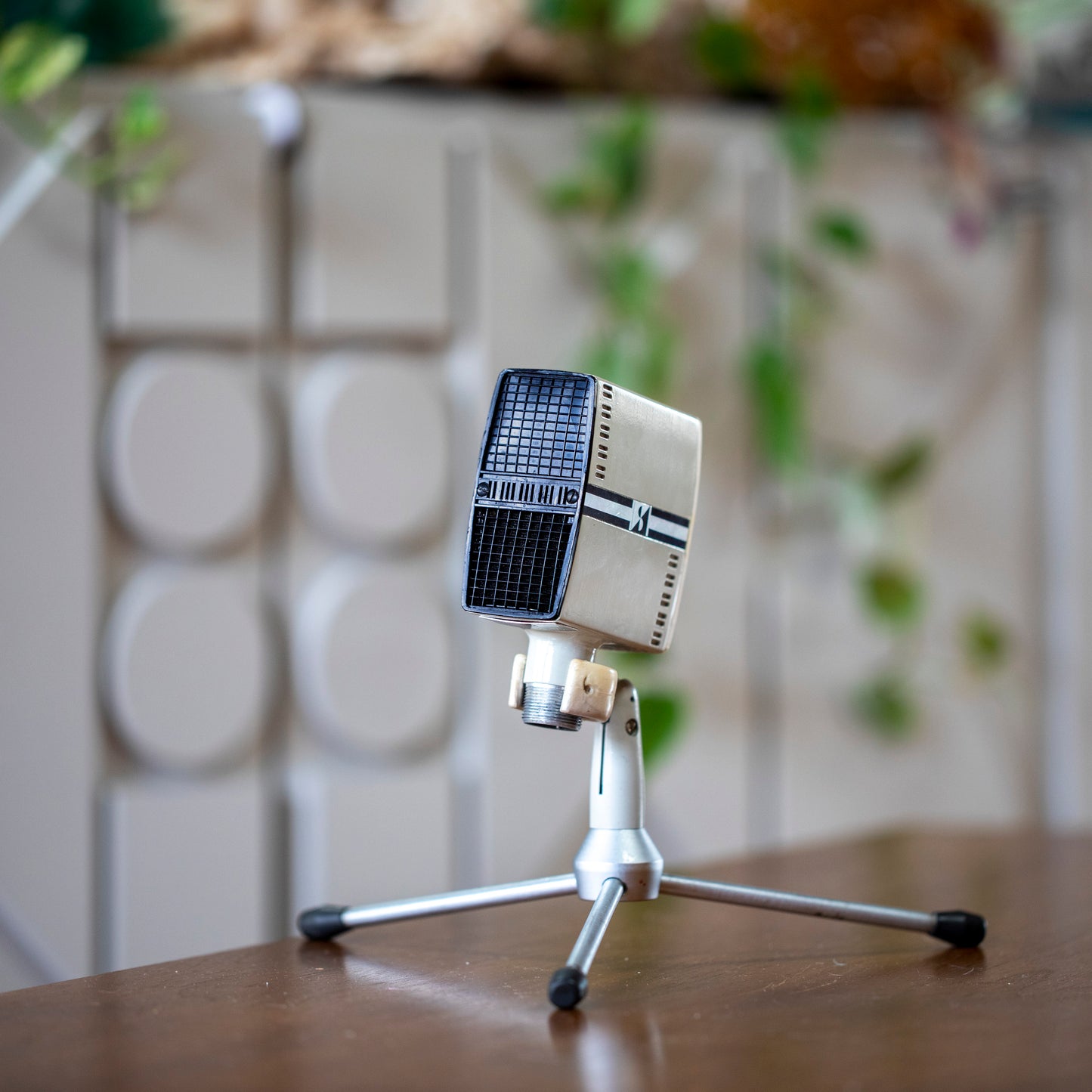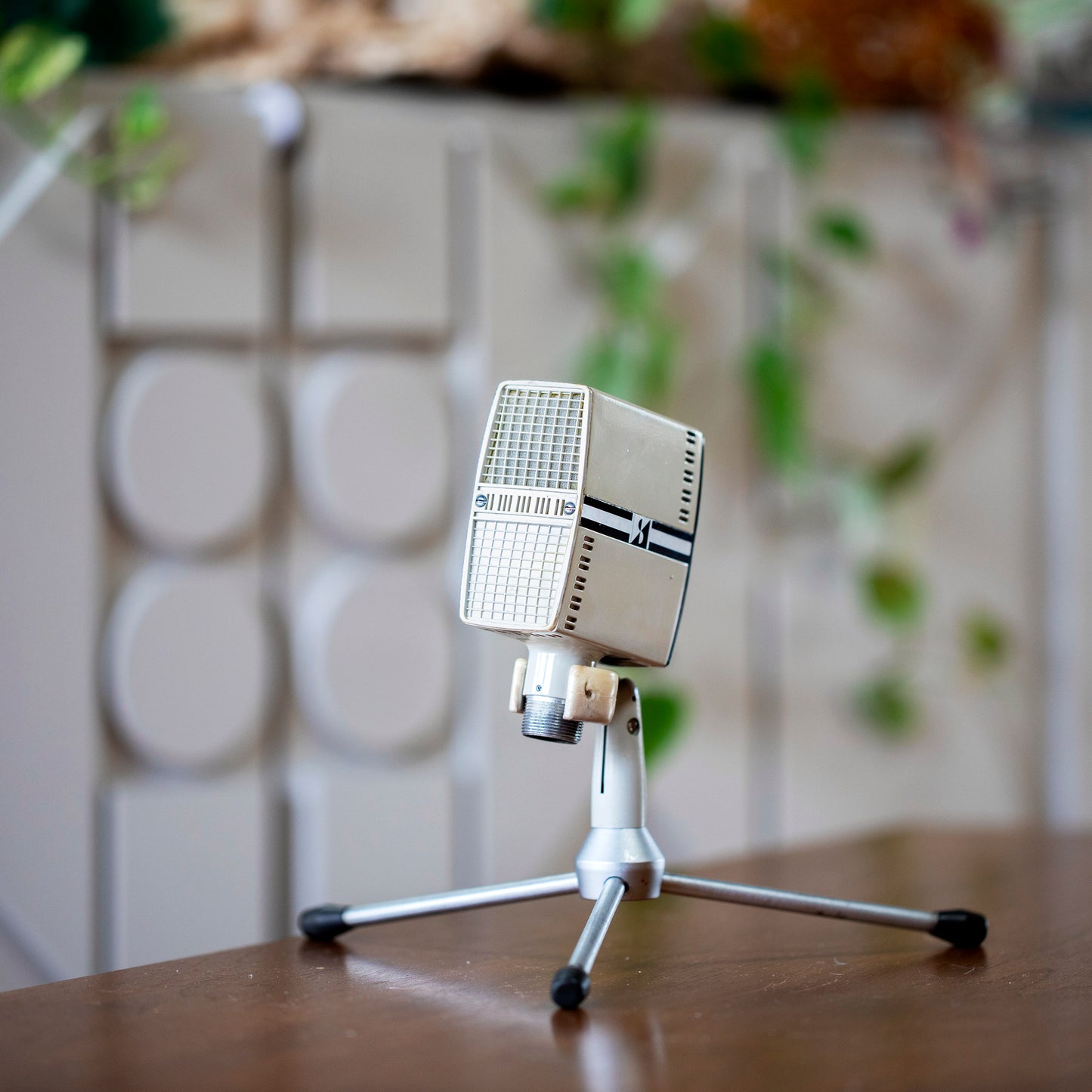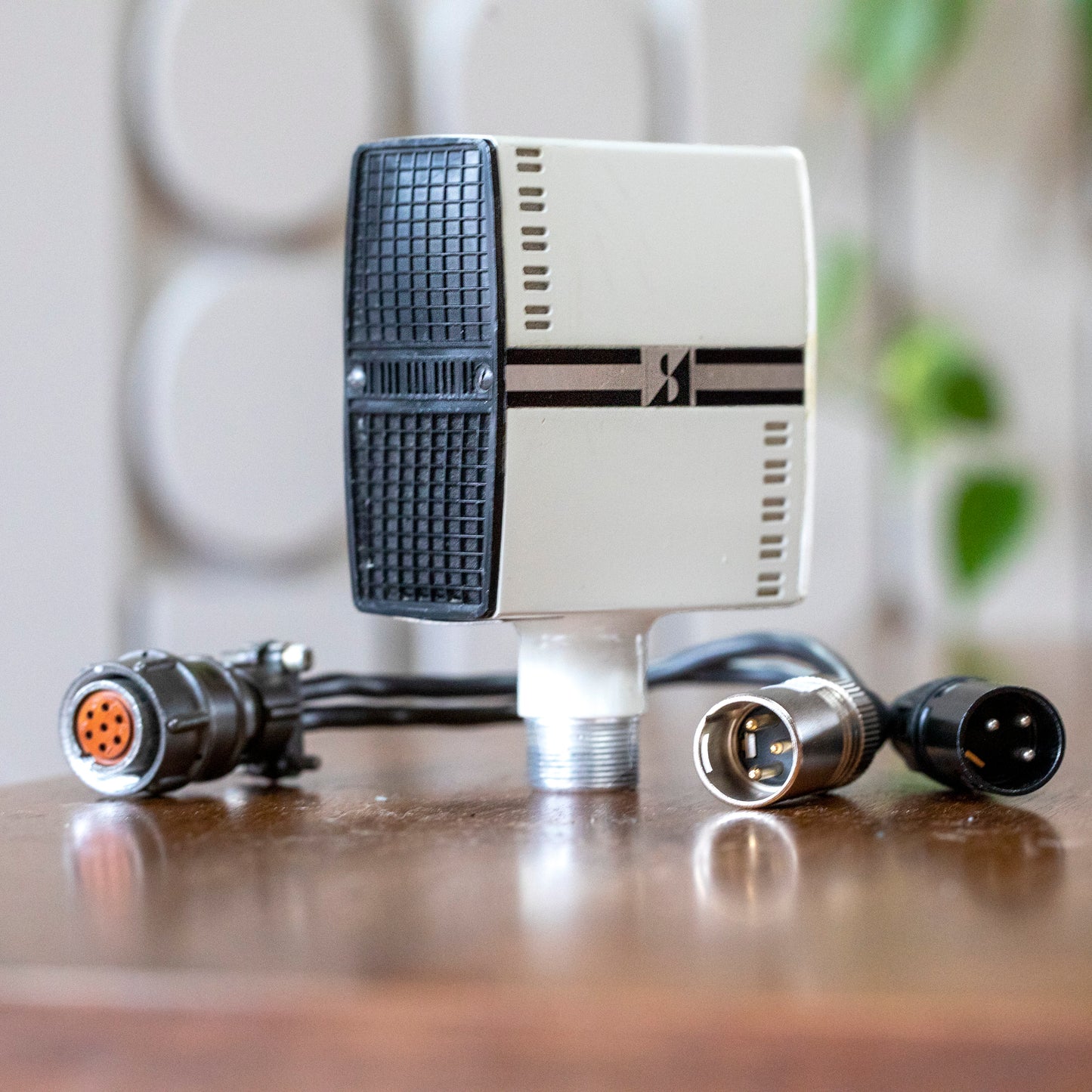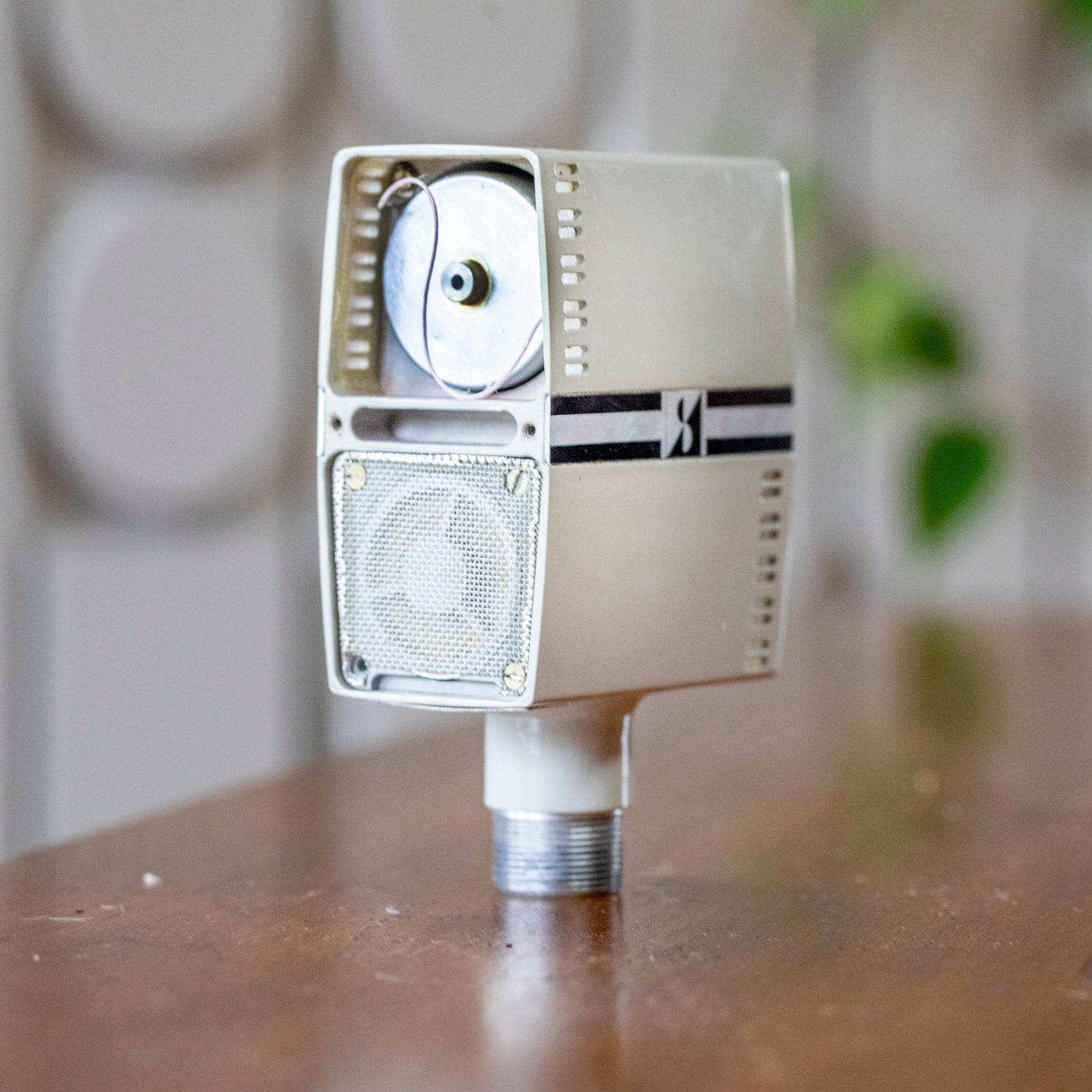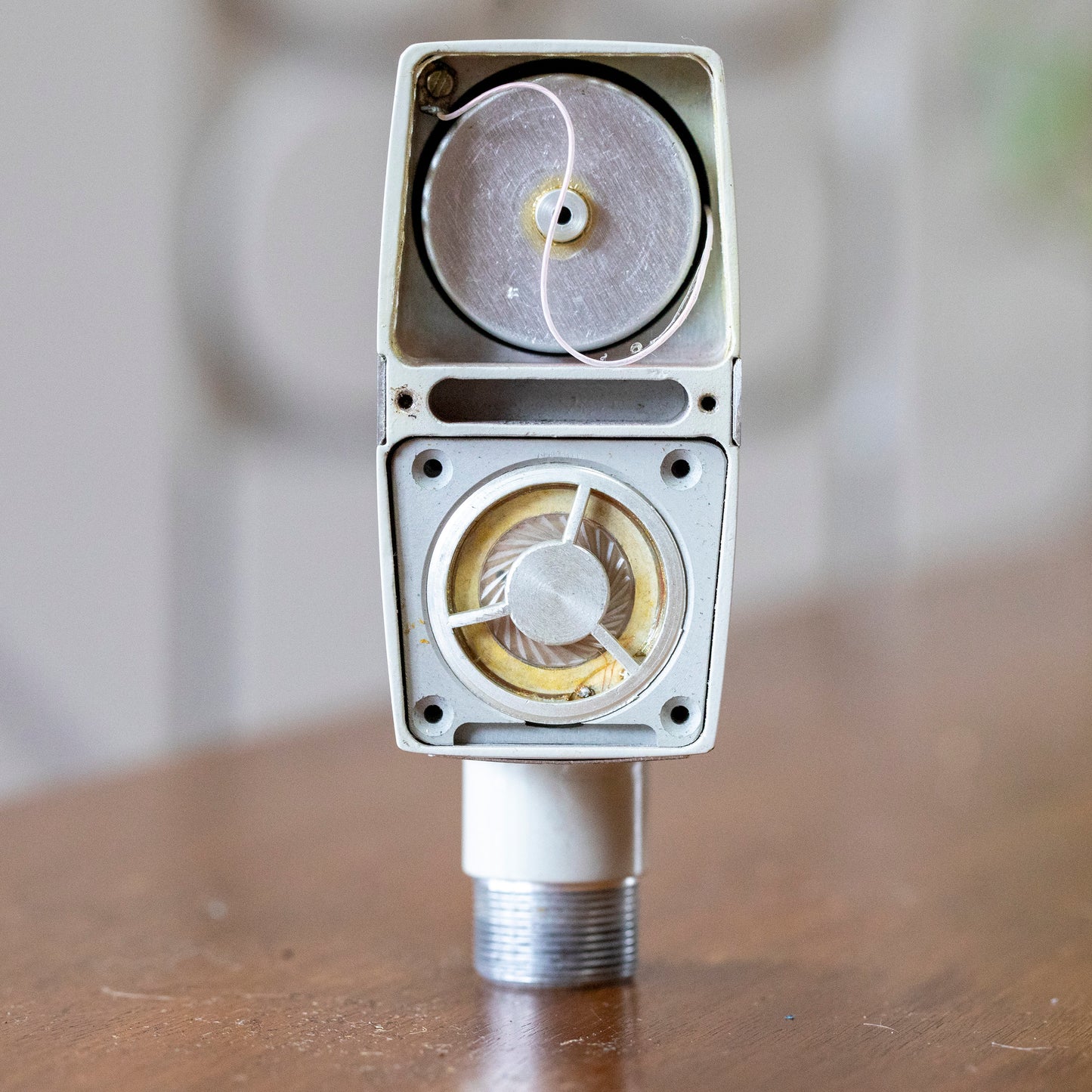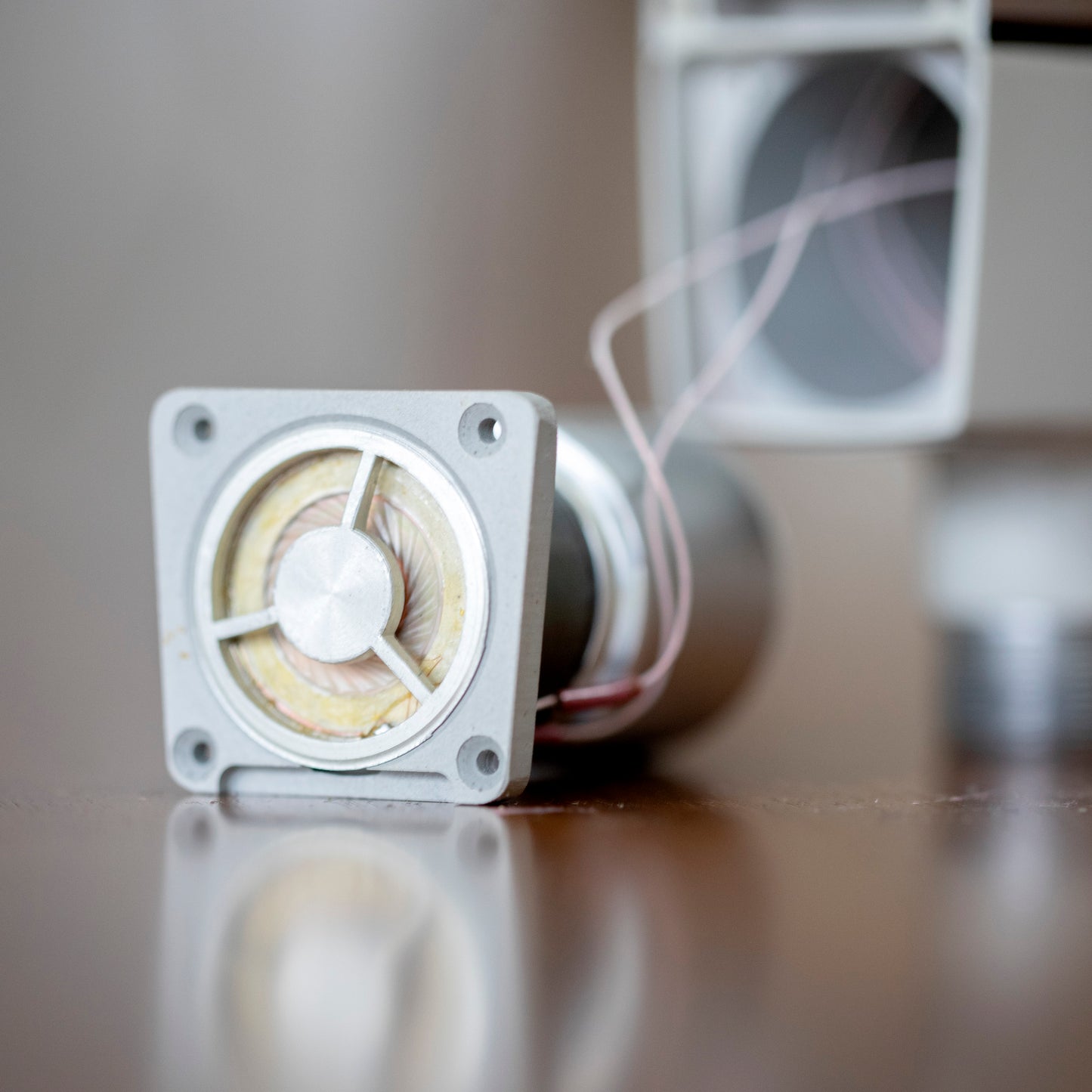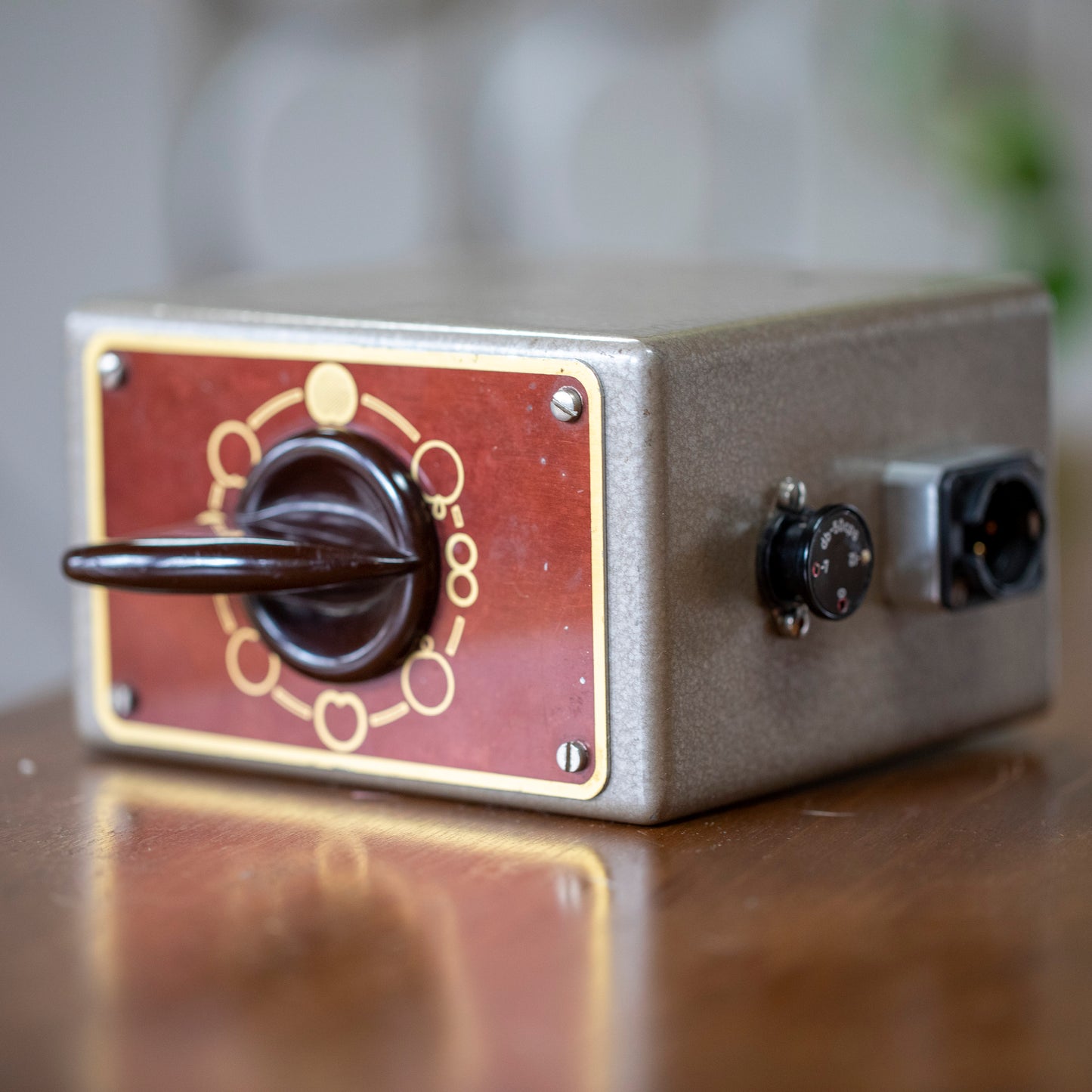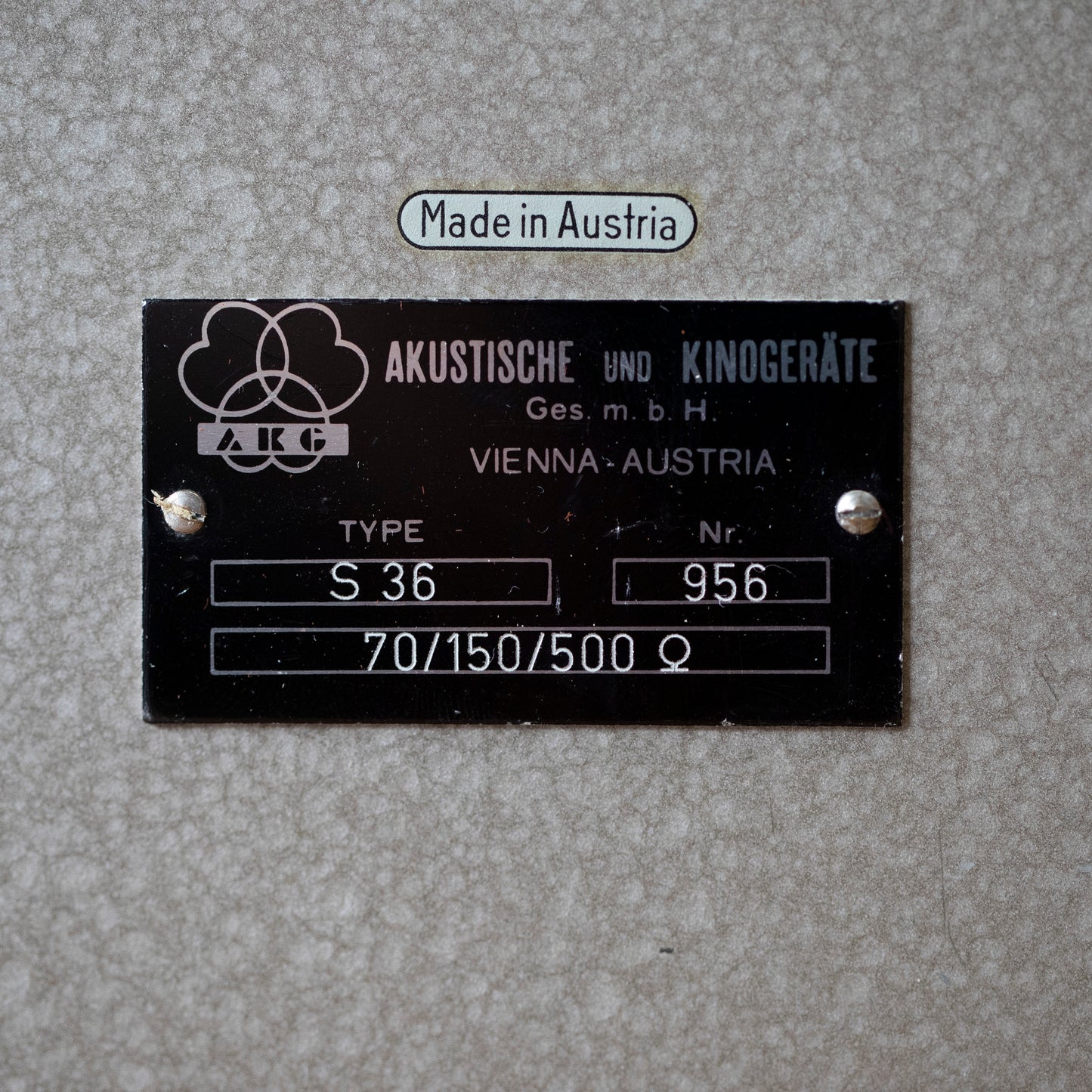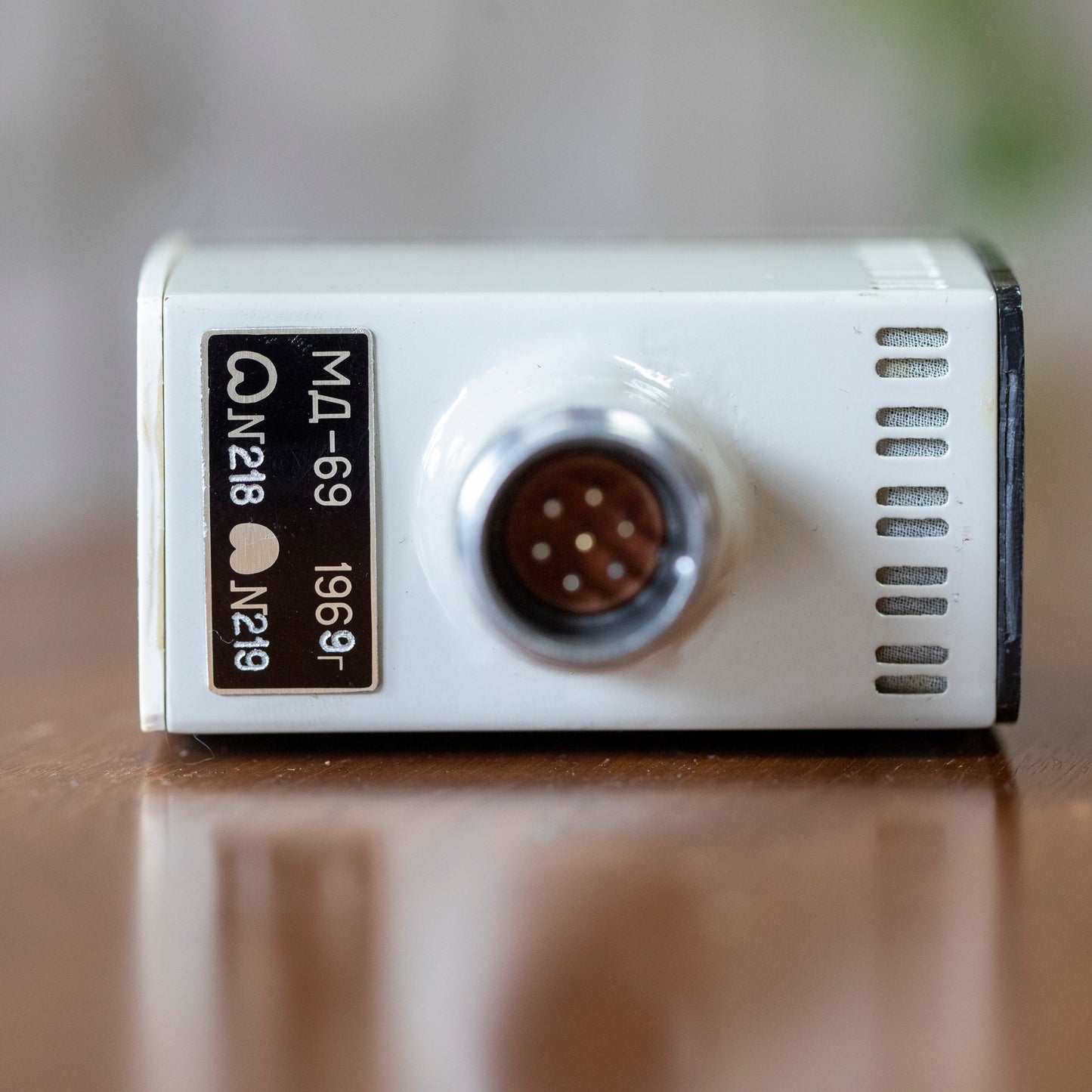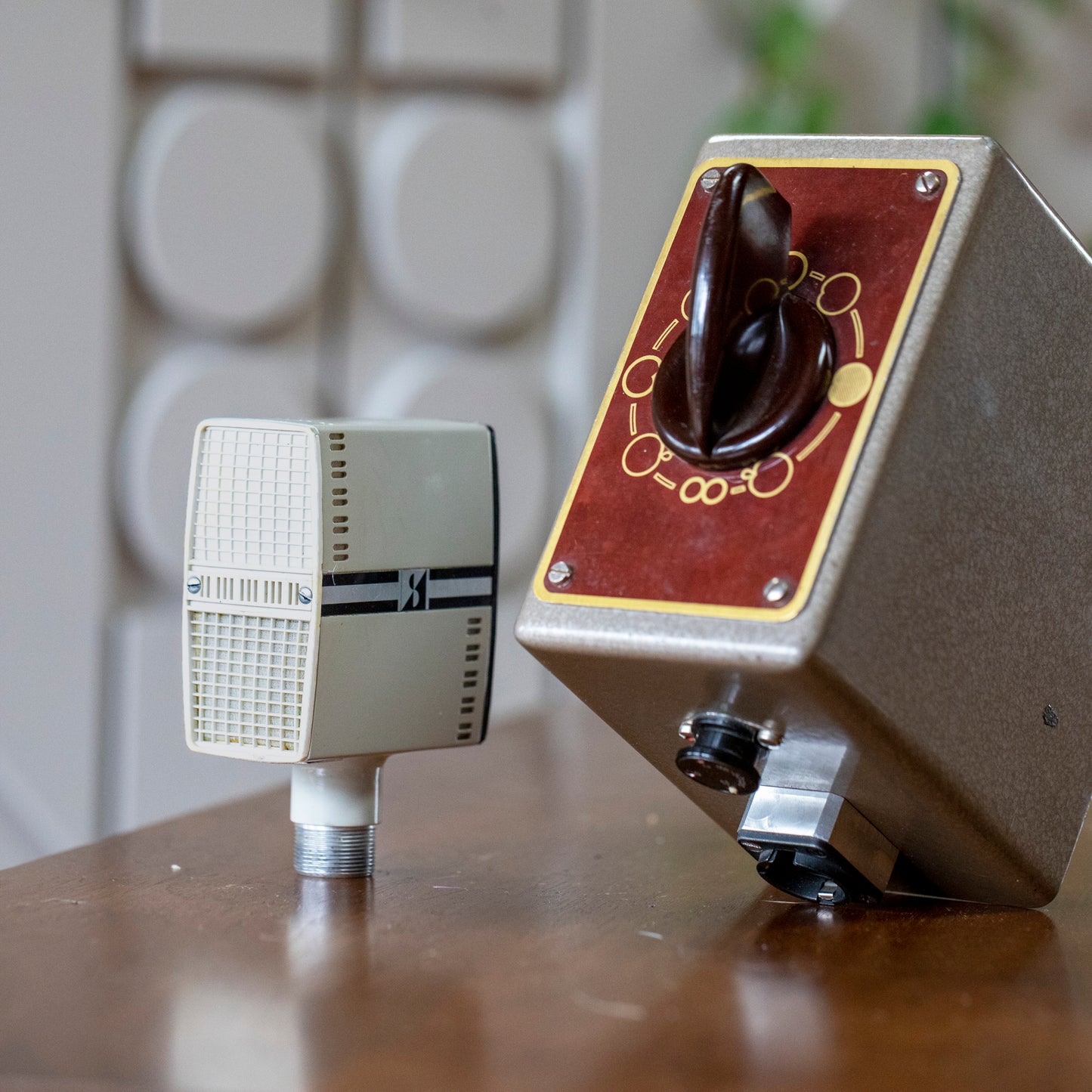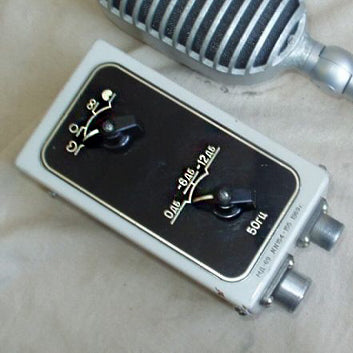Share
IRPA MD-69
IRPA MD-69
SAAS Museum
Manufacturer: IRPA
Model: MD-69
Country of Origin: Russia / Soviet Union
Years of Manufacture: 1960s
Type: Dynamic
Polar Pattern: Multipattern
Rarity Scale: 10/10
DETAILED DESCRIPTION (click to expand)
DETAILED DESCRIPTION (click to expand)
This bizarre mic is the IRPA MD-69, a Soviet dual large diaphragm dynamic microphone designed and manufactured by the Popov Institute in Leningrad in the 1969. It uses two identical large moving diaphragms (each with their own serial numbers!) positioned back-to-back pointing opposite directions. I can’t help but question the meaning of model number, although it's probably the year it was designed.
The complete MD69 system includes a polar pattern matrix switch box (last photo) that passively blended the amplitude and polarity of the two capsules to generate different polar patterns, much like an AKG D36. At the time of these photos, we had yet to find an original MD-69 switch box but were lucky enough to find an AKG S36 switch box which worked well. We have since acquired two original switch boxes to be used with the MD69, MD53, and MD56, and now use the AKG S36 switchboxes with our LOMO 19a10 microphones.
We made a breakout cable with two XLRs that allows you to record both capsules separately to blend together at the console or in the DAW. The MD-69 can also be used as a stereo mic - having the two capsules 180 degrees from each other makes a dramatic stereo effect, great for ambient mic'ing.
The mic has a unique sonic character that works well in certain applications such as kick drum, guitar amps, and as a vocal mic. It can be blended with more traditional mics to add color and a unique tonal character.
HEAR THE IRPA MD-69 (click for info)
HEAR THE IRPA MD-69 (click for info)
Hear the MD69 on our "proprietary microphone jingle” on the audio player below.
The song was recorded using the MD69 on each instrument. For the drum set it was positioned about 4 ft above the snare drum. For bass and both guitar amps, we recorded both capsules so you could tinker with blending them to achieve different polar patterns, although the effect will be minimal on a close-mic’ed source (forgot to do it for the drums). The link contains an unprocessed stereo mix and individual files for each instrument. Everything was recorded at modest levels through our Sphere Eclipse console preamps into a Burl A/D without any processing whatsoever.
CONTACT
CONTACT
SEND US A MESSAGE HERE
